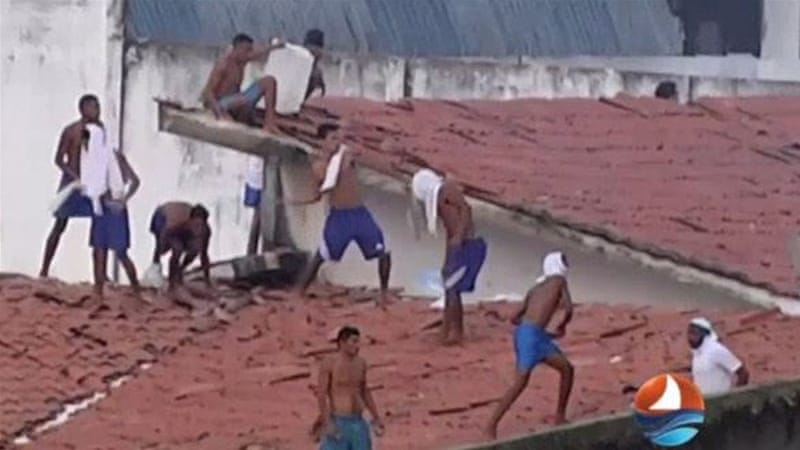"Accidental" Carnage in Brazil
"Stopping the bloodshed begins with the federal and state governments calling this what it is: a public emergency."
"This is a problem from hell that has been festering for half a century."
Robert Muggah, research director, Igarape Institute, Brazil think-tank
"There are more than one thousand prisoners, all out of their cells, and some are armed [inside two prisons in the northern state of Rio Grande do Norte]."
"What we are doing now is trying to avoid a massive escape."
Major Wellington Camilo da Silva

When, as dawn arrived, the prisons werefinally entered it was to discover to no one's surprise -- after earlier such events had occurred, horrifying the country at their outcomes -- 26 dead inmates, many decapitated. At the turn of the new year, the wave of violence convulsing Brazilian prisons began when in a prison in the northern state of Amazonas, 56 inmates were killed in the first of the episodes where rival gangs challenged one another in lethal combat.
That first massacre was characterized by Brazil's President Michel Temer as a "terrible accident". It was terrible indeed, beyond the scope of the imagination of most people, that human being could descend to such depraved atrocities that led to 125 prisoners being slaughtered, heads cut off, hearts and intestines ripped out of their lifeless bodies. In the first drug-trafficking clash prison riot, many of those killed were decapitated, their heads thrown outside the prison walls.
Only several days on, in the state of Roraima, another 33 prisoners were killed. Many of them had their hearts and intestines stripped from their bodies, resulting from one gang's members initiating the bloodshed. And again, in smaller prison riots in Amazonas and the state of Paraiba in early January another ten inmates were killed.

A number of studies conclude that some 40 percent of inmates had not yet been convicted. While awaiting hearings for their cases, many, desperate to survive in the climate of the prisons, join gangs. Leading to fears that the violence might conceivably be communicated to the slums in cities like Rio de Janeiro and Sao Paulo, where drug operations are orchestrated by drug-cartel leaders from their prison cells.
And while National Guard troops are dispatched to hot spots, solutions are desperately being considered. Thousands of inmates are shuffled among various prisons, amid plans to construct an additional five prisons. And authorities in the field of Brazilian justice are studying how the legal process that sees thousands of people locked up for months or years while their cases are being processed, might be expedited.
 |
| Violence is common in overcrowded prisons and 40 percent of inmates have yet to be sentenced [TV Ponta Negra/AFP] |
Labels: Atrocities, Brazil, Prison Riots

<< Home